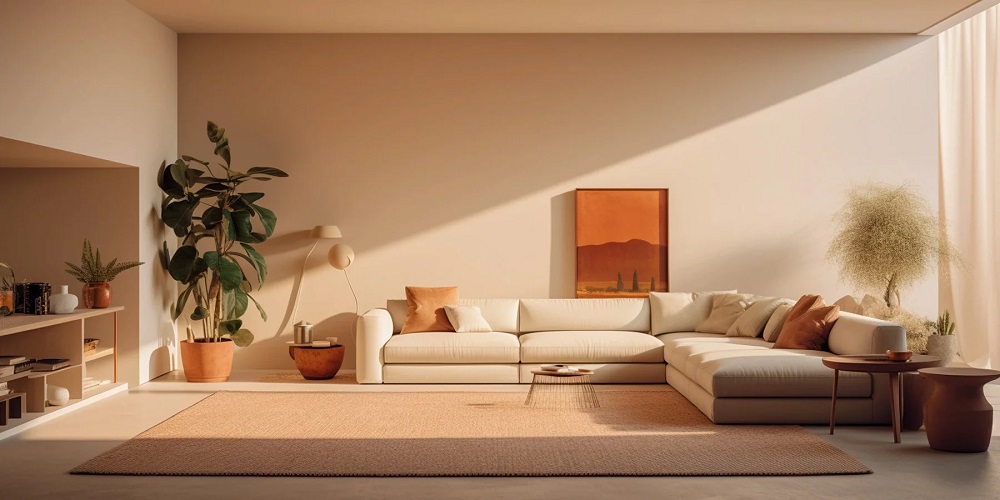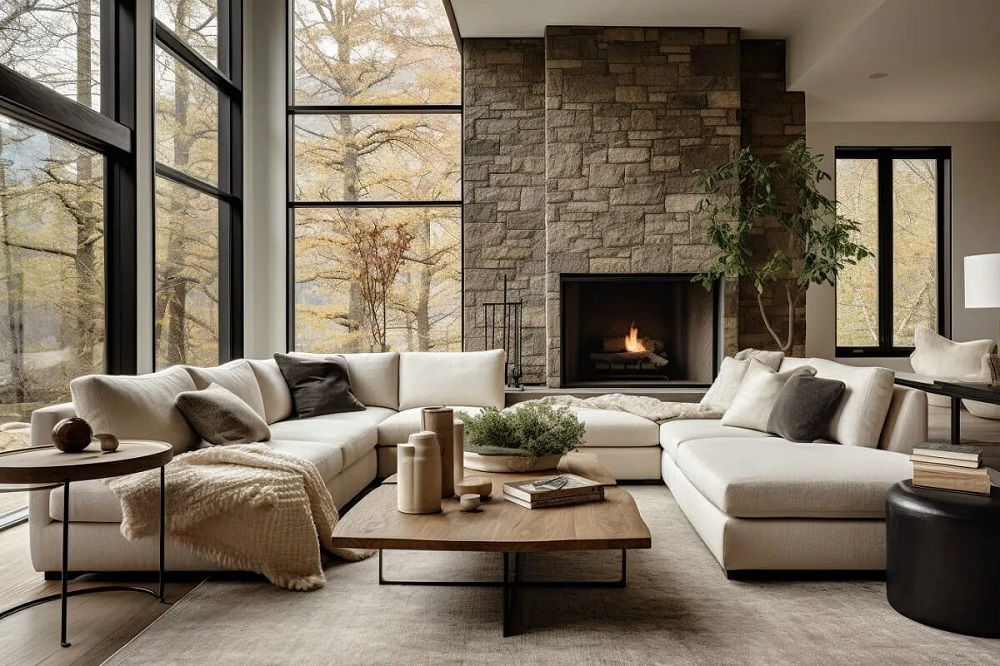
What is the trend in furniture in 2025?
As we move into 2025 the furniture industry is seeing a dynamic shift towards sustainability, multifunctionality and personalized aesthetics. The emphasis on eco-friendly materials and practices is stronger than ever with upcycled pieces and natural materials taking center stage. Smart furniture that incorporates technology for convenience and efficiency is also on the rise, reflecting our increasingly connected lives. These trends underscore a broader movement towards more responsible and adaptable living spaces.
Living room
For the living room 2025 brings furniture trends that prioritize comfort, versatility and a touch of luxury. Sofas are becoming more plush and expansive, offering modular and reconfigurable options to suit any space. Coffee tables and side tables are embracing organic shapes and raw materials, such as stone and wood. Accent pieces like sculptural lamps and bold chairs add personality, while hidden storage solutions help maintain a clutter-free environment.
Dining room
Dining room trends in 2025 emphasize communal and experiential dining. Large, statement dining tables made from sustainable materials like reclaimed wood are popular, often paired with mix-and-match seating to create a more eclectic look. Lighting over the dining area is bold and artistic, serving as a focal point. Additionally, multifunctional furniture pieces, such as extendable tables and benches with storage, reflect the need for adaptable dining spaces.
Bedroom
In the bedroom focus for 2025 is on creating serene and restful retreats. Bed frames with built-in technology, such as charging ports and ambient lighting, are becoming more common. Sustainable and natural materials are preferred for furniture and textiles, promoting a healthy and eco-conscious lifestyle. Customizable storage solutions, like modular wardrobes and under-bed storage, maximize space without sacrificing style.
Outdoor furniture
Outdoor furniture in 2025 is all about blending indoor comfort with outdoor durability. High-performance fabrics that mimic the look and feel of indoor upholstery, yet withstand the elements, are in demand. Multifunctional pieces that can easily transition from dining to lounging are key, with modular and lightweight designs allowing for flexibility in outdoor settings. Eco-friendly materials and production processes are also a significant focus, reflecting a growing concern for the environment.
Bathroom
Bathroom furniture trends in 2025 showcase a blend of functionality and spa-like luxury. Floating vanities with minimalistic designs create a sense of space and modernity. Integrated sink and countertop combinations in materials like concrete and composite are popular for their sleek look and durability. Smart storage solutions, including hidden compartments and modular shelving, keep bathrooms tidy and efficient.
Furniture color
Color plays a pivotal role in furniture trends for 2025 with a move towards earthy tones, pastel shades, and bold accent colors. Warm neutrals and nature-inspired greens and blues create calming and inviting spaces. In contrast, pops of bright color in accent pieces or upholstery add dynamism and focal points to rooms. The use of color is thoughtful and intentional, contributing to the overall mood and cohesion of the space.
Painted furniture
Painted furniture in 2025 sees a resurgence of interest in craftsmanship and customization. Hand-painted details, artistic finishes, and bespoke designs turn furniture into statement pieces. Vintage pieces are given new life with contemporary colors and patterns, blending history with modern style. The trend emphasizes personal expression and the desire for unique, one-of-a-kind items in the home.
Furniture design trends 2025

The overarching furniture design trends of 2025 are characterized by a blend of innovation and tradition. There’s a strong emphasis on sustainable design with a focus on longevity and materials that minimize environmental impact. Furniture shapes are becoming more organic and fluid moving away from strict geometric forms. At the same time, there’s a revival of vintage and artisanal elements, celebrating craftsmanship and the beauty of imperfection. The trends reflect a desire for authenticity, comfort, and sustainability in our living spaces.